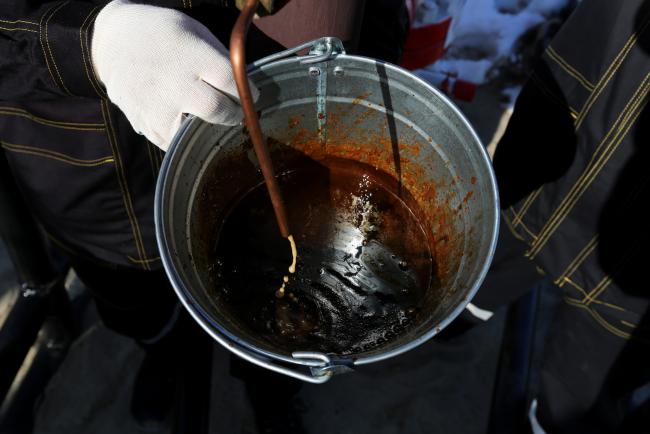(Bloomberg) -- Oil surged to the highest level since December 2014 as the worldwide glut that triggered the worst market collapse in a generation continued to shrink.
Futures gained 2 percent in New York. As the Organization of Petroleum Exporting Countries pressed on with output curbs, a key U.S. government report on Wednesday is expected to show crude stockpiles dropped for an eighth straight week. That would be the longest stretch of winter inventory declines since 2007-2008.
“Production cuts and demand are continuing to rebalance the market,” Gene McGillian, a market research manager at Tradition Energy in Stamford, Connecticut, said by telephone.
Oil in New York has traded above $60 a barrel and the international benchmark Brent has held above $66 since December as OPEC and allied suppliers capped output and pledged to do so for the remainder of the year. Yet, higher prices could spur a bounce in U.S. crude production. The Energy Information Administration increased its forecast for American crude output this year to a fresh record-high of 10.27 million barrels a day.
West Texas Intermediate for February delivery jumped $1.23 to settle at $62.96 a barrel on the New York Mercantile Exchange.
Cushing Levels
Brent for March settlement climbed $1.04 to end the session at $68.82 on the London-based ICE Futures Europe exchange. The global benchmark crude traded at a premium of $5.95 to March WTI.
U.S. crude stockpiles at the Cushing, Oklahoma, pipeline hub probably fell by 1.5 million barrels last week, according to a forecast compiled by Bloomberg. Inventories at Cushing dipped below 50 million barrels through the week ended Dec. 29, the first time they have dropped below that level since February 2015, according to the most recent Energy Information Administration data.
“The market is anticipating a pretty good draw in the crude oil storage number,” Bob Yawger, director of futures at Mizuho Securities USA Inc. in New York, said by telephone.
The industry-funded American Petroleum Institute is scheduled to release its stockpiles data on Tuesday.
Oil-market news:
- OPEC supply curbs should create oil price stability in 2018 and prices might hit $70, according to Nigeria’s NNPC.
- Iranian Oil Minister Bijan Namdar Zanganeh cautioned that OPEC doesn’t want to see Brent above $60 because it may entice American shale explorers to boost production.
- The growth in shale output will keep prices from rising much, Christof Ruehl, head of research at Abu Dhabi Investment Authority, said at a conference in Abu Dhabi.
